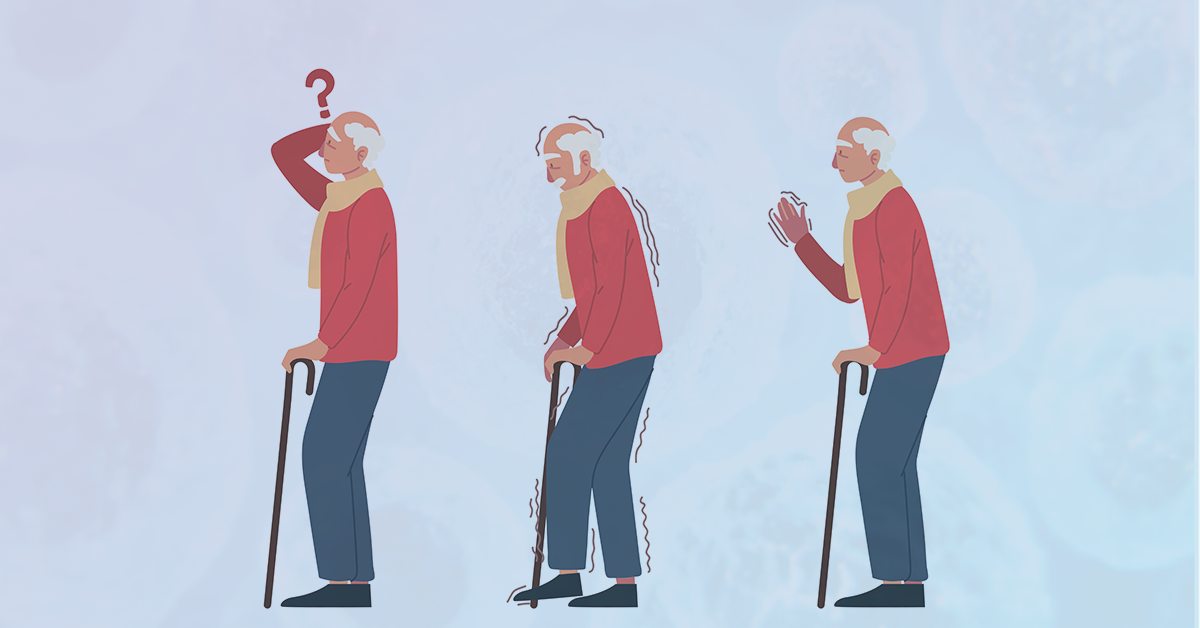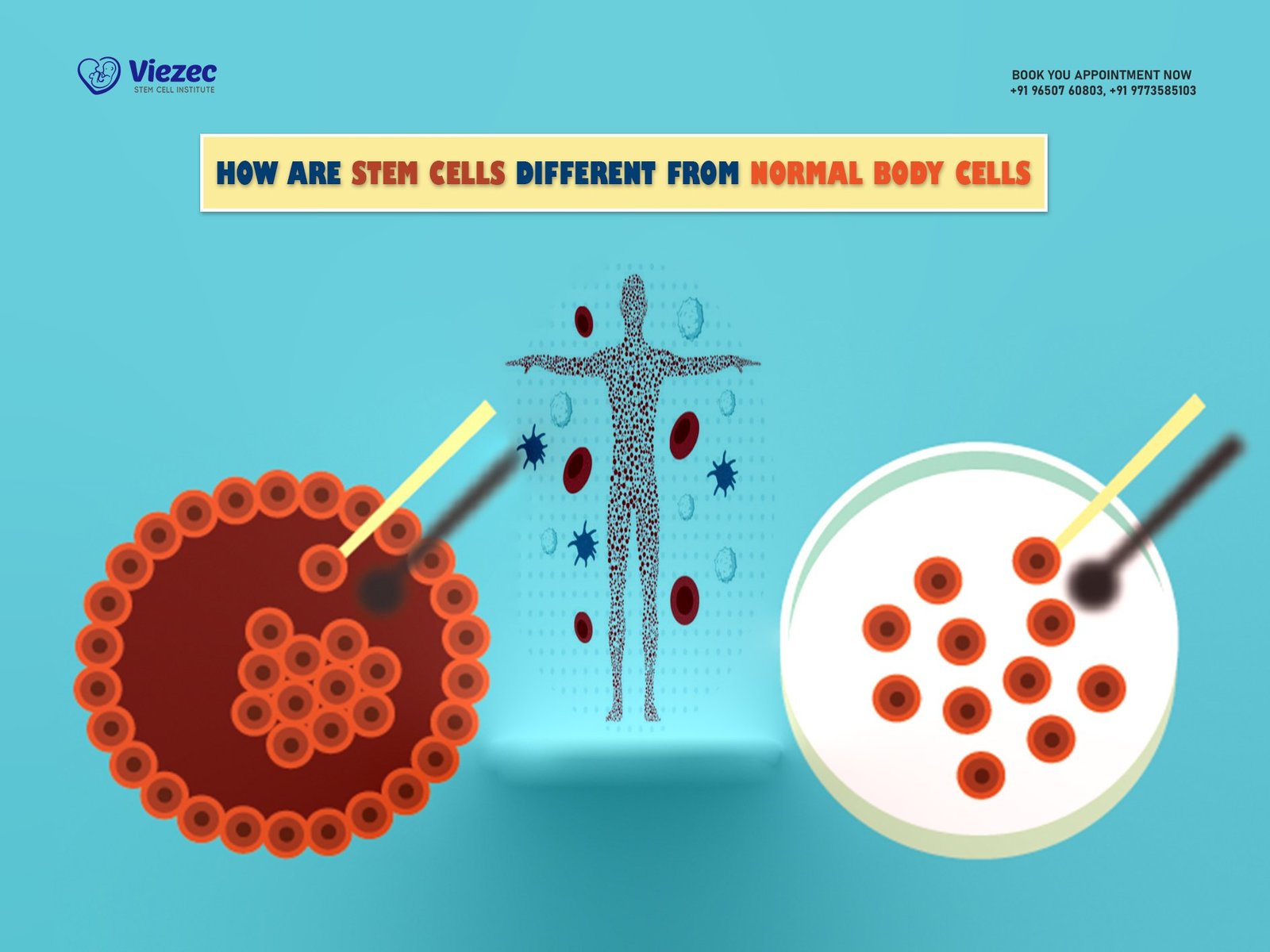Parkinson’s disease is a complex neurological condition that gradually impairs movement and affects millions worldwide. This in-depth guide explores the condition from its earliest warning signs to advanced stages—highlighting both traditional and cutting-edge treatment options. You’ll learn about the roles of genetics, environmental factors, and aging in triggering the disease, along with how Parkinson’s is diagnosed and monitored over time.
The article also introduces emerging regenerative therapies—specifically stem cell therapy and exosome therapy—that show exciting promise in not just managing symptoms but potentially repairing damaged brain tissue. Holistic lifestyle strategies, from diet and exercise to emotional wellness, round out a whole-person approach to care. With ongoing research and innovation, hope for a brighter, healthier future for those living with Parkinson’s is stronger than ever.
Introduction to Parkinson’s Disease
What Is Parkinson’s Disease?
Parkinson’s disease is a chronic, progressive disorder of the nervous system that mainly affects movement. It happens when nerve cells in a region of the brain called the substantia nigra gradually deteriorate or die. These cells are responsible for producing dopamine—a chemical messenger that helps coordinate smooth and balanced muscle movements. As dopamine levels drop, everyday activities like walking, writing, or speaking become increasingly difficult.
But Parkinson’s isn’t just a movement disorder. Over time, it can affect a person’s thinking, sleep, mood, and even digestion—making it a complex and deeply personal condition for each individual.
Who Is Most at Risk?
Parkinson’s typically develops in people over the age of 60, but younger adults can also be affected—especially in early-onset cases, which may be linked to specific genetic mutations. Men are slightly more likely than women to be diagnosed.
Other key risk factors include:
-
Family history of Parkinson’s
-
Chronic exposure to pesticides or industrial toxins
-
Past head injuries (such as concussions or trauma from contact sports)
While researchers don’t yet fully understand why some people develop Parkinson’s and others don’t, ongoing studies continue to uncover potential triggers and protective factors.
Causes and Risk Factors
Understanding what causes Parkinson’s disease is still an area of active research. While there’s no single answer, scientists believe it’s likely due to a combination of genetic and environmental factors, along with age-related changes in brain chemistry. Let’s break it down:
Genetic Triggers
Most cases of Parkinson’s are not inherited, but genetics can still play a role—especially in early-onset Parkinson’s. Certain mutations in genes such as LRRK2, SNCA, PARK7, and PINK1 have been linked to a higher risk of developing the condition. These gene changes can affect how brain cells function, survive, or communicate.
However, inheriting a Parkinson’s-related gene does not guarantee that someone will develop the disease—it only increases the likelihood. In fact, only around 10–15% of cases have a clear genetic component.
Environmental Influences
Long-term exposure to environmental toxins has been associated with Parkinson’s. These include:
-
Pesticides and herbicides (like paraquat and rotenone)
-
Solvents and industrial chemicals (such as trichloroethylene)
-
Living in rural areas or drinking well water, where pesticide use may be more prevalent
While these exposures don’t directly cause Parkinson’s, they may increase the risk by damaging the cells that produce dopamine.
Aging and Brain Chemistry
Age is by far the most significant risk factor. Most people diagnosed with Parkinson’s are over 60. As we age, neurons naturally decline in function and number, particularly those that produce dopamine.
In addition to dopamine loss, oxidative stress, mitochondrial dysfunction, and inflammation in the brain may also contribute to the death of nerve cells—accelerating the disease process.
Take the First Step Toward Relief
Explore personalized stem cell treatment options for Parkinson’s at Viezec.
Recognizing the Symptoms of Parkinson’s
Parkinson’s disease doesn’t show up overnight. Its symptoms often appear slowly and subtly, making early detection challenging. These symptoms fall into two categories: motor (movement-related) and non-motor (involving mood, sleep, digestion, and more). Recognizing both types early can lead to better treatment outcomes.
Early Warning Signs
Before noticeable tremors or movement issues begin, Parkinson’s may whisper its presence through small, everyday changes. These subtle signs often go unnoticed or are mistaken for aging:
-
A diminished sense of smell (anosmia)
-
Constipation that doesn’t improve with diet
-
Smaller, cramped handwriting (micrographia)
-
A softer or lower voice
-
Slight trembling in a hand while at rest
Spotting these signs early—especially in combination—can help prompt an earlier diagnosis and management plan.
Motor Symptoms (Tremors, Rigidity)
Motor symptoms are the hallmark of Parkinson’s disease. They tend to start on one side of the body and gradually spread.
-
Tremors: Rhythmic shaking, especially when at rest. This often begins in the hands or fingers.
-
Bradykinesia: Slowness of movement that can make walking, dressing, or eating difficult.
-
Muscle rigidity: Stiffness in the arms, legs, or neck that may cause pain or reduce range of motion.
-
Postural instability: Trouble maintaining balance, leading to falls and stooped posture.
These symptoms worsen over time but can be managed with therapy, medication, and support.
Non-Motor Symptoms (Mood, Sleep, Digestion)
Parkinson’s affects more than just movement. In fact, non-motor symptoms may appear years before the classic tremors and stiffness.
-
Mood disorders: Depression, anxiety, and apathy are common and can severely affect quality of life.
-
Cognitive changes: Slowed thinking, difficulty concentrating, or even dementia in later stages.
-
Sleep problems: Insomnia, restless legs, and REM sleep behavior disorder (acting out dreams).
-
Autonomic issues: These include low blood pressure when standing, sweating abnormalities, constipation, and bladder problems.
Managing non-motor symptoms is just as important as addressing physical ones, and doing both together leads to more holistic care.
Diagnosing Parkinson’s Disease
Diagnosing Parkinson’s is not as straightforward as running a single test. Instead, it involves a comprehensive medical evaluation, often supported by imaging tools and clinical observations over time. Since symptoms can mimic other neurological conditions, an accurate diagnosis requires both experience and attention to detail.
Medical Evaluation and Imaging
The diagnostic journey usually starts with a neurologist, especially one who specializes in movement disorders. Here’s what the process typically includes:
-
A thorough review of medical history
-
A neurological examination to assess coordination, reflexes, muscle tone, and walking
-
Evaluation of both motor and non-motor symptoms
While no blood test or scan can confirm Parkinson’s outright, certain tools can help rule out other conditions:
-
MRI scans: Used to rule out strokes, tumors, or multiple system atrophy.
-
DaTscan (Dopamine Transporter Scan): A specialized imaging test that measures dopamine activity in the brain. Reduced uptake can support a Parkinson’s diagnosis.
Still, most diagnoses are clinical—based on how symptoms appear and respond to treatment (especially to levodopa).
Staging and Monitoring Progression
After diagnosis, doctors monitor disease progression using clinical scales. The two most commonly used are:
-
Hoehn and Yahr Scale: A simple system that ranks disease progression from Stage 1 (mild, one side of the body) to Stage 5 (wheelchair-bound or bedridden).
-
Unified Parkinson’s Disease Rating Scale (UPDRS): A more detailed scale assessing motor skills, daily activities, mood, and complications.
Monitoring helps doctors tailor treatments, track changes, and adapt care as needs evolve.
Traditional Parkinson’s Disease Treatments
There’s currently no cure for Parkinson’s disease, but a variety of conventional treatments can help manage symptoms and improve quality of life. These include medications, surgery, and rehabilitative therapies—each tailored to the individual’s stage and symptom profile.
Medications (Levodopa, Dopamine Agonists)
Medications are the first line of defense in Parkinson’s care, and most aim to increase dopamine levels or mimic its effects.
-
Levodopa/Carbidopa: Often considered the gold standard, levodopa converts to dopamine in the brain. Carbidopa prevents it from breaking down before it reaches the brain, reducing side effects like nausea.
-
Dopamine agonists: These medications (like pramipexole or ropinirole) mimic dopamine’s effect in the brain. They’re often used in early stages or alongside levodopa.
-
MAO-B inhibitors: Drugs like selegiline and rasagiline slow the breakdown of dopamine, helping it stay active longer.
-
COMT inhibitors: These are added to levodopa therapy to extend its effects by blocking the enzyme that degrades dopamine.
Each medication has its own benefits and potential side effects—like dyskinesia (involuntary movements), hallucinations, or sleepiness—which is why finding the right balance is key.
Surgical Interventions (Deep Brain Stimulation)
For patients who no longer respond well to medication or experience severe motor fluctuations, Deep Brain Stimulation (DBS) may be recommended.
-
DBS involves surgically implanting electrodes into specific brain regions, such as the subthalamic nucleus or globus pallidus.
-
These electrodes deliver controlled electrical pulses to regulate abnormal nerve signals, reducing tremors, stiffness, and motor fluctuations.
It doesn’t stop disease progression but can significantly improve quality of life—especially when medications become less effective.
Physical and Occupational Therapy
Non-drug approaches play a crucial role in maintaining function:
-
Physical therapy focuses on balance, strength, and mobility—helping reduce the risk of falls and improve independence.
-
Occupational therapy helps patients adapt to daily tasks with smart techniques and assistive devices.
-
Speech therapy can address voice softening or swallowing difficulties.
These therapies are especially important in mid-to-late stages and should be incorporated early for long-term benefit.
Need More Info on Stem Cell Therapy?
Let our experts help you understand your options for Parkinson’s treatment.
Emerging Therapies in Parkinson’s Care
While traditional treatments focus on symptom management, emerging therapies aim to repair or regenerate damaged brain tissue—potentially slowing or even reversing the disease process. Two of the most promising developments in this field are stem cell therapy and exosome therapy.
Stem Cell Therapy for Parkinson’s
Stem cells are unique because they can develop into many different types of cells—including the dopamine-producing neurons that are lost in Parkinson’s.
How Stem Cells May Repair Damaged Brain Tissue
When stem cells are introduced into the brain, their goal is to replace the damaged neurons responsible for Parkinson’s symptoms. In some approaches, the stem cells are pre-differentiated into dopamine cells before being transplanted.
These transplanted cells may:
-
Restore dopamine production, improving motor control
-
Integrate with existing brain tissue, forming new neural connections
-
Support a regenerative environment, promoting brain healing
Current Clinical Trials and Outcomes
Several global clinical trials are investigating the safety and effectiveness of stem cell-based therapies for Parkinson’s. Early results from studies in Japan, the U.S., and Europe are promising, showing improvements in motor symptoms and patient-reported outcomes.
That said, the field is still in early stages. Researchers continue to refine protocols, delivery methods, and ensure long-term safety before these therapies can become widely available.
Exosome Therapy as a Non-Cellular Alternative
Exosome therapy represents a newer, cell-free approach to regenerative medicine. Rather than using live cells, it harnesses the healing signals those cells produce.
Mechanism of Action and Regenerative Potential
Exosomes are tiny extracellular vesicles released by stem cells. They act as messengers, carrying proteins, lipids, RNA, and growth factors to nearby cells. In Parkinson’s, exosomes may:
-
Stimulate repair of damaged neurons
-
Reduce inflammation in the brain
-
Encourage neural plasticity and regeneration
A major advantage is that exosomes are small enough to cross the blood-brain barrier, making them an effective tool for targeting brain-related disorders.
Benefits Over Traditional Treatments
-
Minimally invasive: Often delivered via IV or intranasal routes
-
No risk of immune rejection: Since there are no live cells
-
Potential to complement existing therapies, enhancing their effectiveness
Though still experimental, exosome therapy is gaining momentum as a safe, scalable, and innovative solution for neurodegenerative diseases.
Consult With a Specialist Today
Discover how regenerative therapy may help manage Parkinson’s symptoms.
Lifestyle and Holistic Approaches
While medications and advanced therapies are vital, lifestyle changes and holistic strategies play a powerful role in managing Parkinson’s symptoms. In fact, many patients find that what they do daily—from movement to mindset—can make a noticeable difference in their quality of life.
Exercise and Movement Strategies
Regular physical activity isn’t just helpful—it’s essential for people with Parkinson’s. Exercise can improve strength, flexibility, balance, and even mood. Studies show that consistent movement may help slow the progression of motor symptoms.
Effective movement practices include:
-
Aerobic exercise (walking, swimming, cycling) to boost circulation and endurance
-
Tai chi and yoga to enhance balance and reduce fall risk
-
Dance or boxing-based programs tailored for Parkinson’s to improve coordination and rhythm
Even light daily activity can help manage stiffness and increase confidence in mobility.
Nutritional Support for Brain Health
A healthy diet can support the brain and gut—both of which are affected in Parkinson’s. There’s no one-size-fits-all Parkinson’s diet, but some nutritional habits can make a meaningful impact:
-
Mediterranean-style eating: Rich in fruits, vegetables, whole grains, legumes, and healthy fats
-
Omega-3 fatty acids: Found in fish, flaxseeds, and walnuts—may support cognitive function
-
Hydration and fiber: Help combat constipation, a common non-motor symptom
In some cases, meal timing may need to be adjusted to prevent protein from interfering with levodopa absorption—so nutritional counseling can be helpful.
Mental and Emotional Wellness
Living with a progressive disease can be emotionally taxing. Mental health is often overlooked, yet it’s a critical part of Parkinson’s care.
Supportive practices include:
-
Mindfulness and meditation to reduce anxiety and improve mood
-
Counseling or therapy for coping with diagnosis and long-term changes
-
Support groups, both in-person and online, to connect with others on the same journey
Caring for emotional health can empower patients to live fully and face the condition with resilience and hope.
Hope for the Future
Parkinson’s disease has long been seen as a progressive and irreversible condition—but that perception is beginning to change. Thanks to groundbreaking research and innovation, the future holds new hope for patients, caregivers, and the medical community alike.
Advances in Regenerative Medicine
Science is rapidly evolving, and regenerative medicine is at the forefront of what may redefine Parkinson’s treatment. Key areas of focus include:
-
Gene therapy: Experimental techniques are exploring how to deliver genes directly into the brain to restore dopamine function or protect neurons.
-
Neuroprotective agents: These are drugs or molecules designed to shield brain cells from damage, potentially slowing progression.
-
Stem cell and exosome research: As covered earlier, these cutting-edge therapies aim to rebuild and rejuvenate the brain—not just manage symptoms.
What’s exciting is that many of these innovations are already in clinical trials, with early results showing promise and opening the door to personalized treatment options.
Is a Cure for Parkinson’s on the Horizon?
While we’re not there yet, the momentum is undeniable. With increased funding, global collaboration, and better understanding of brain biology, researchers are closer than ever to discovering disease-modifying therapies—and perhaps one day, a cure.
In the meantime, each new breakthrough brings patients better options, longer quality of life, and a renewed sense of optimism. For many living with Parkinson’s, it’s not just about managing the disease—it’s about living fully and fearlessly in spite of it.









